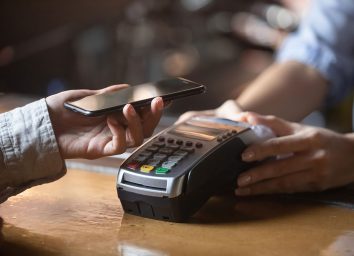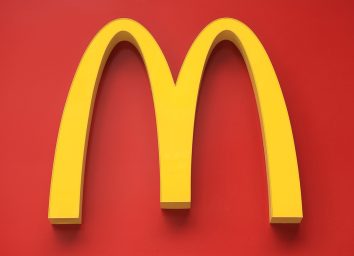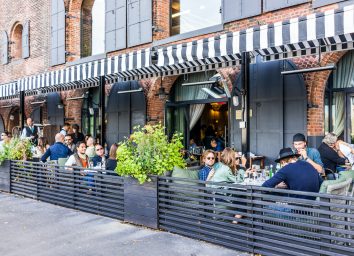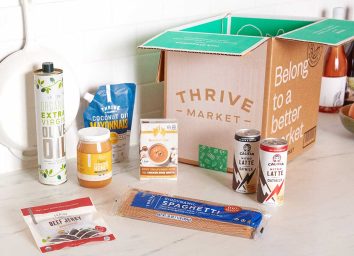5 New Things in Restaurants You’re Going to Have to Get Used To
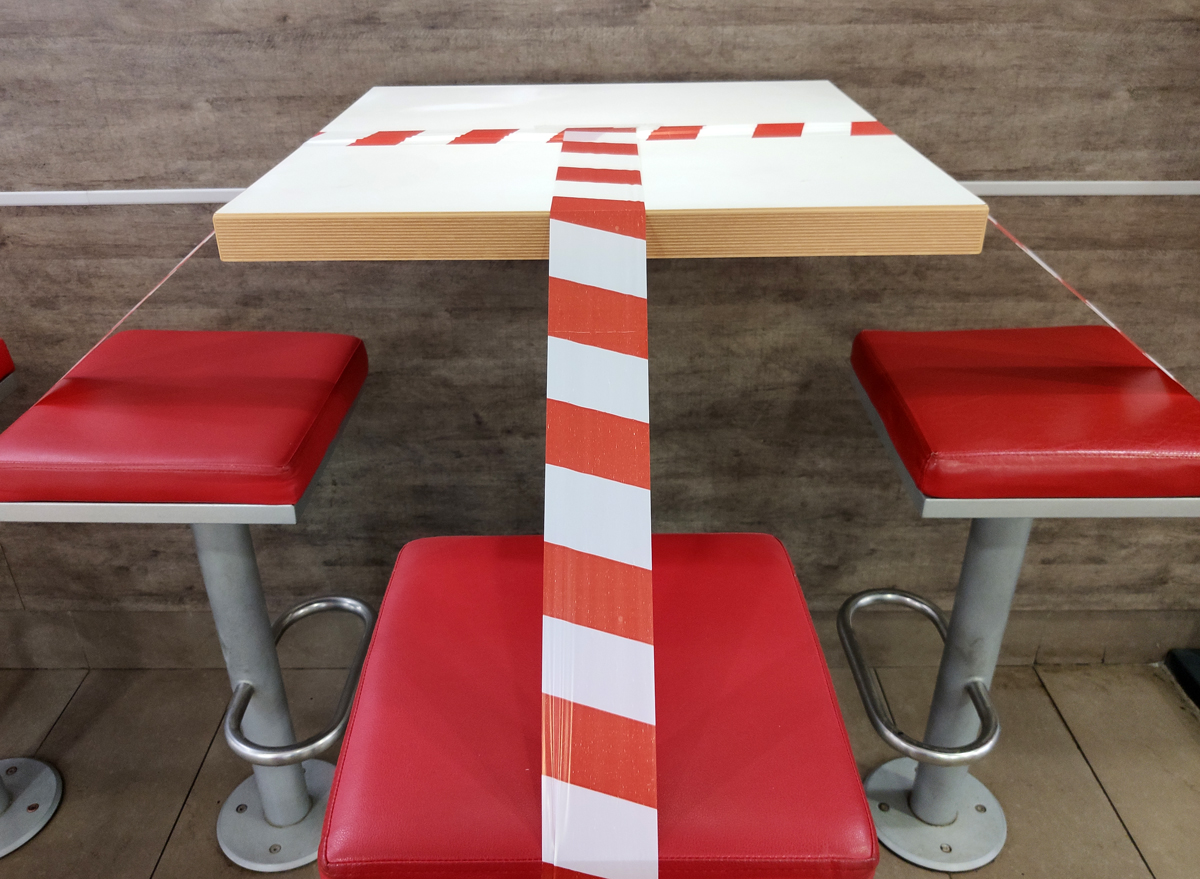
Despite restaurants reopening across the country, a measly 12 percent of Americans say they would feel comfortable dining in a restaurant today. And maybe that’s because most of us think restaurants haven’t adequately prepared to open their doors when COVID-19 cases are still on the rise. In fact, only 4 percent of people polled in a May 2020 ROI Rockets survey said they thought their communities were prepared for these reopenings.
If you’re part of the 96 percent that think communities are ill-equipped to reopen, we hope we can quell some of those fears by sharing the extreme lengths restaurants are taking to make sure their dining rooms will keep their customers safe.
The following things will be a new part of your regular dining experience and may take a while to get used to. While they’ll certainly be alien and maybe even a little uncomfortable the first time you step foot in the doors of your local restaurant, you should know that they’re all being implemented to keep your health in mind.
While you may feel a little more comfortable dining out after reading about these new things in restaurants, you should still keep an eye out for 7 Warning Signs It’s Not Safe to Eat in a Restaurant.
Contactless payment
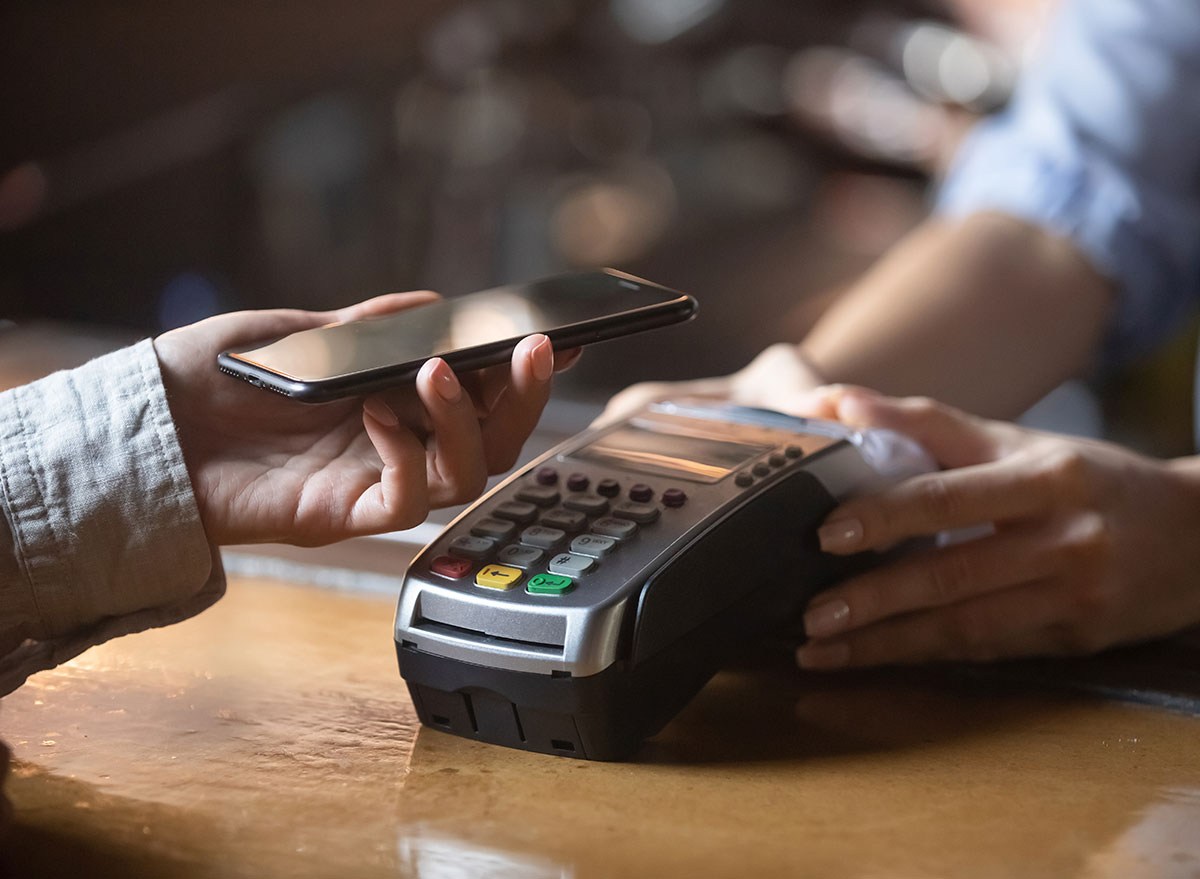
To minimize exchanging objects that are handled by multiple (potentially infected) people, reopening guidelines have recommended that restaurants start using contactless payment. That would either mean that a waiter would come to your table with a payment terminal you could tap your credit card to in order to pay or that you would pay your bill on your phone through an app. Paying with cash or stuffing a credit card into a bill are just some of the 9 Things You’ll Never Be Allowed to Do in Restaurants Again.
Plexiglass
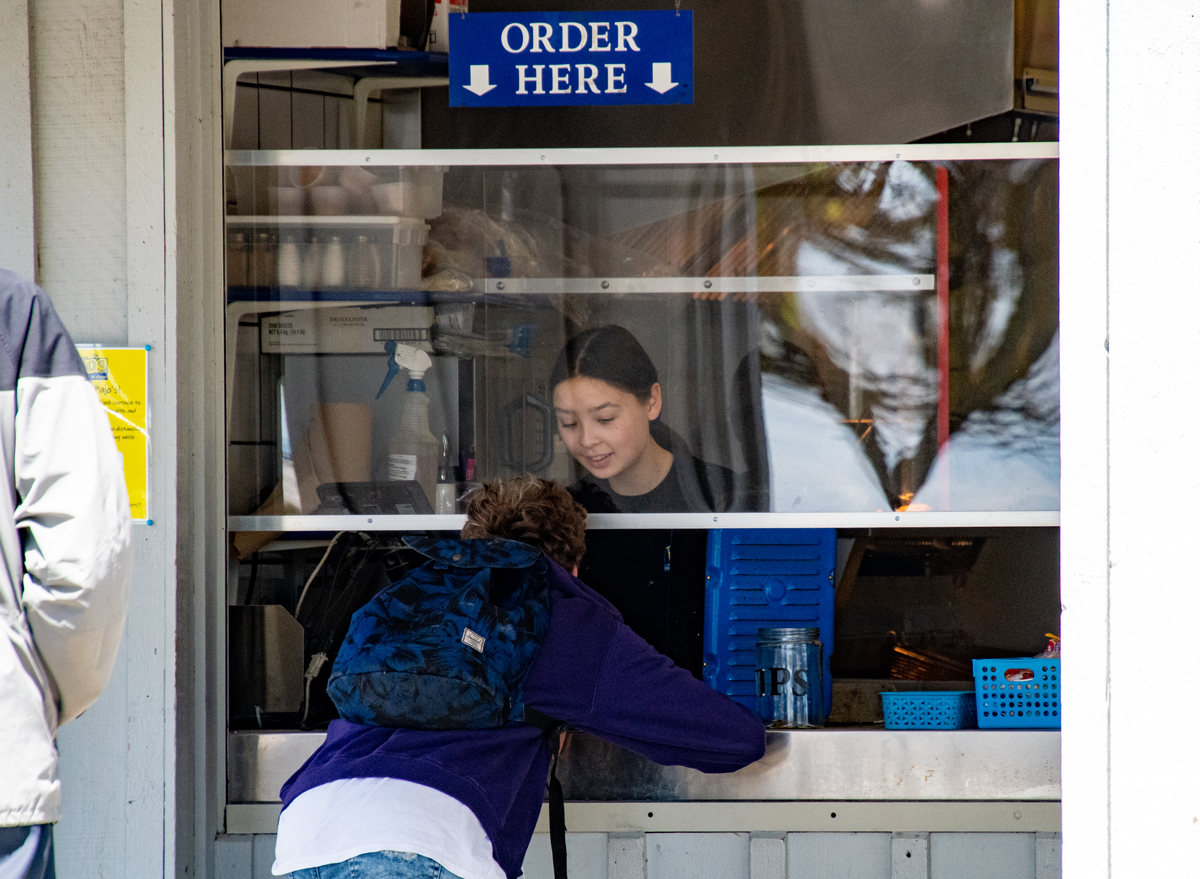
You’ve probably already come across plexiglass being used as a barrier between employees and customers in partially-opened storefronts, grocery stores, and takeout stations, and you should expect to see it used in restaurant dining rooms, as well. The CDC recommends that restaurants “install physical barriers, such as sneeze guards and partitions, particularly in areas where it is difficult for individuals to remain at least 6 feet apart.” Those areas include cash registers, host stands, or food pickup areas. Plexiglass may be used between booths and separating barstools. Seeing a host or hostess behind plexiglass isn’t the only change in these restaurant employees’ jobs. There are also 4 Things Restaurant Hosts Aren’t Allowed to Do.
Waiting for your table in the parking lot
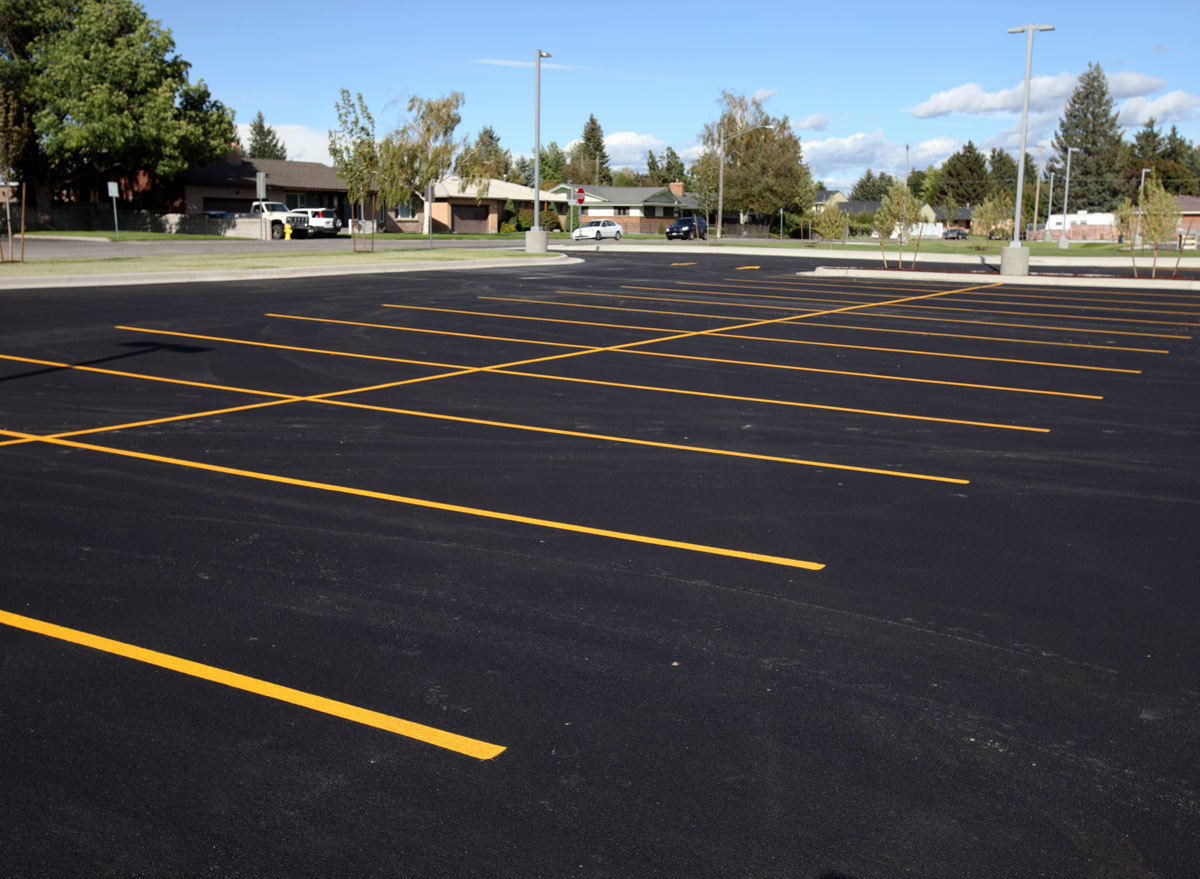
Gone are the days when you can belly up to the bar or hang out in a restaurant’s waiting area while your table is prepared. Because you won’t be able to keep a 6-feet social distance between yourself, the host, other patrons, and restaurant employees, it is unsafe for guests to stay in these common waiting areas. Instead, you’ll likely be asked to wait in the parking lot, your car, or wherever else you feel comfortable. Wherever you are, you can expect to get a text that your table is ready.
STAY INFORMED: Sign up for our newsletter to get the latest food news delivered straight to your inbox.
Tables sectioned off
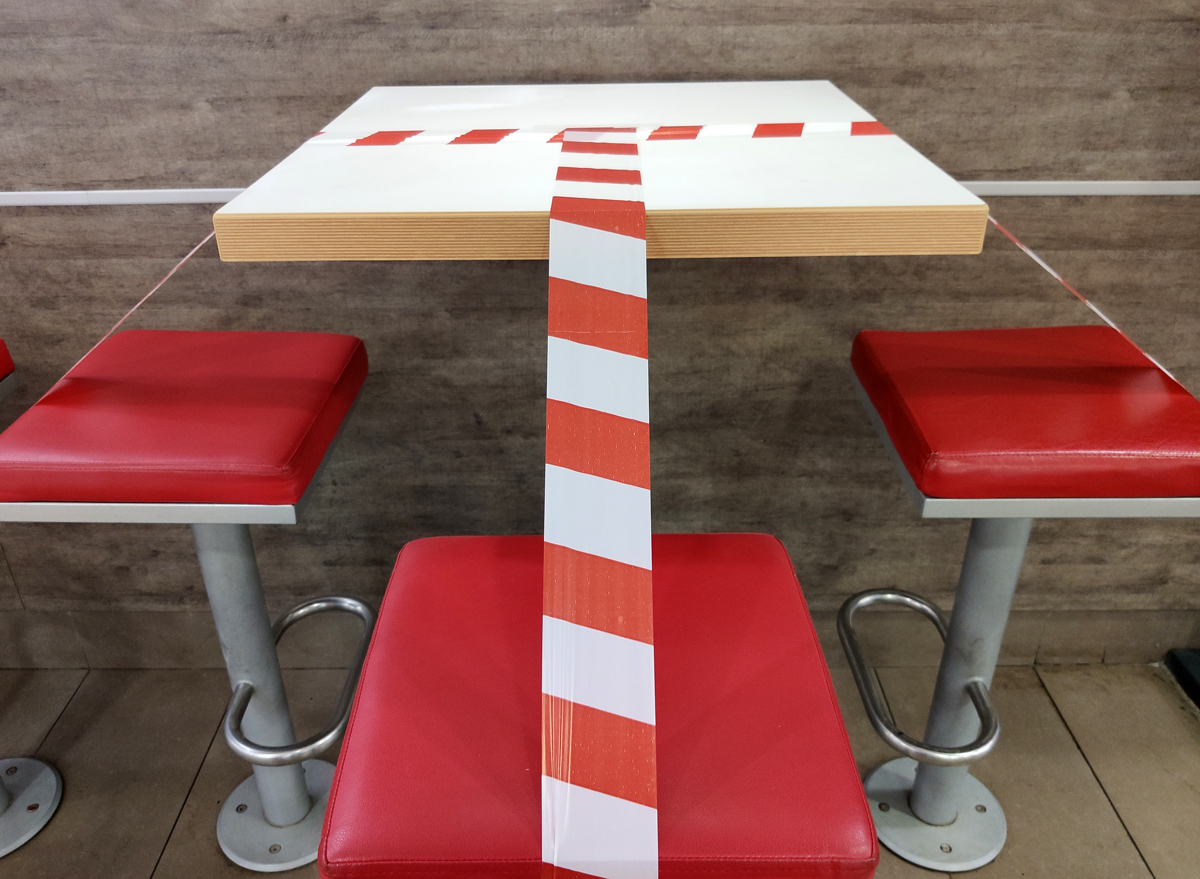
Be prepared to see a lot of red tape. Restaurants need to ensure that there is at least six feet between tables. In order to do that, some restaurants will remove seating and others, like those with built-in booths, will have to tape off certain tables so you know you can’t sit there.
Waiters wearing masks
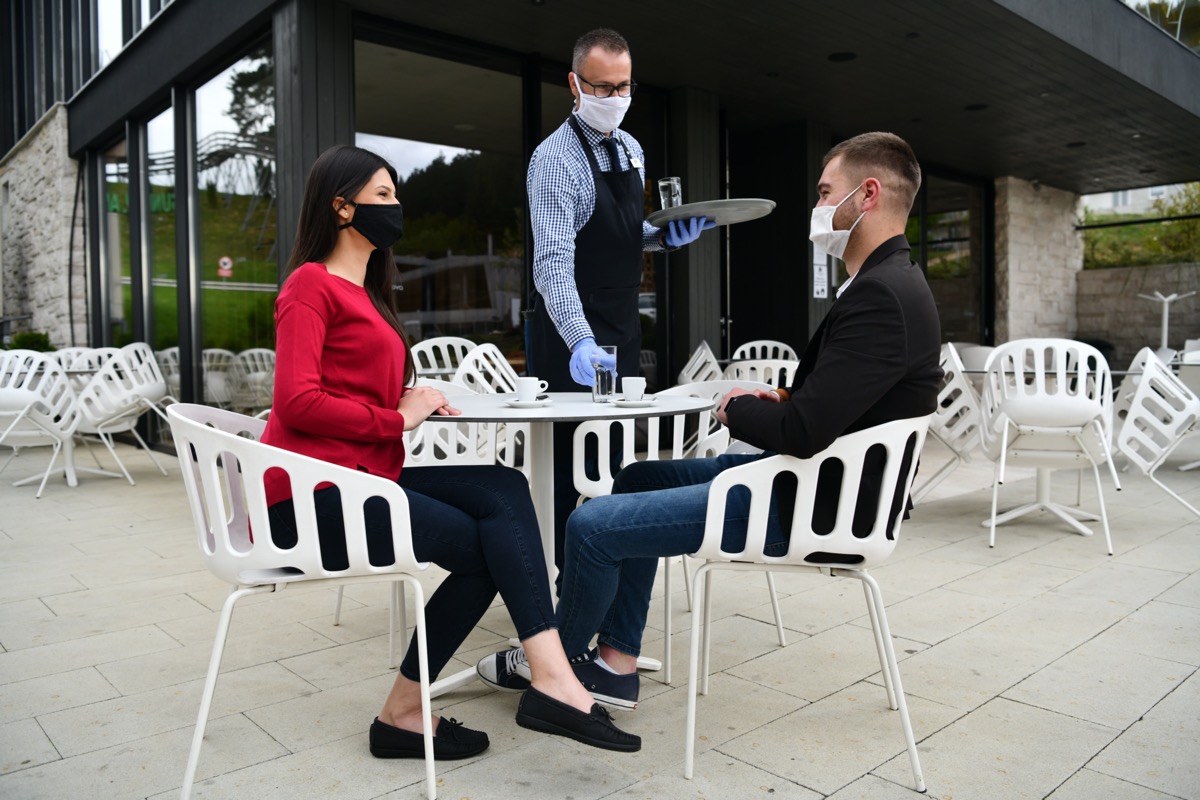
It’s going to feel a little awkward to be served by someone wearing a mask, but this will be the new normal for a couple years post-coronavirus. The CDC is telling restaurants that they need to require the use of cloth face coverings among all staff. Taking your order without wearing a mask isn’t the only way your interaction with your waiter is going to change. Check out these 7 Things Waiters Are No Longer Allowed to Do.
